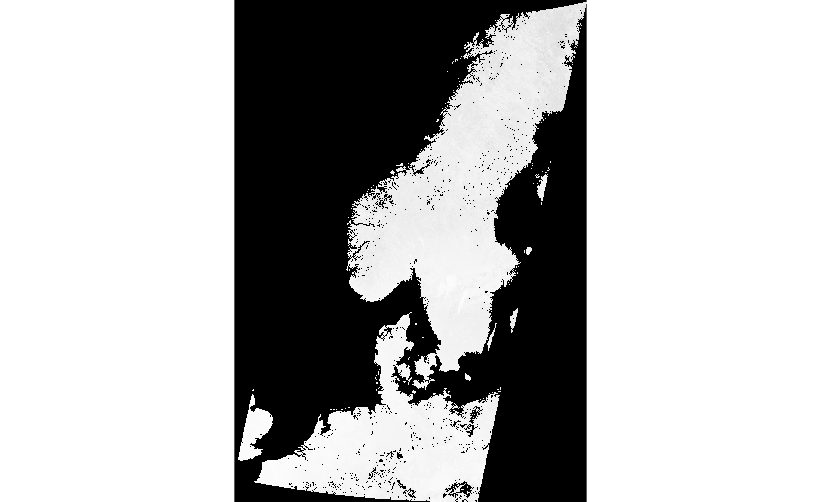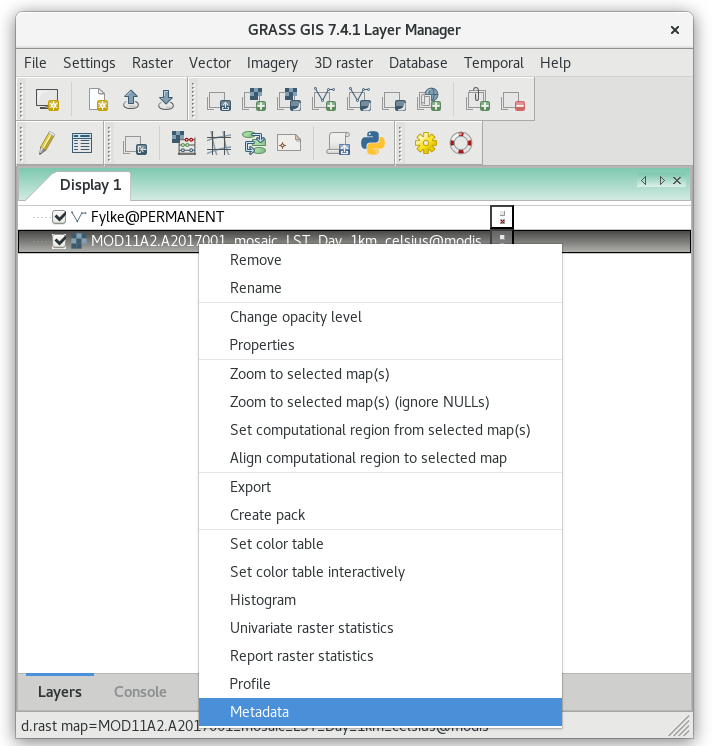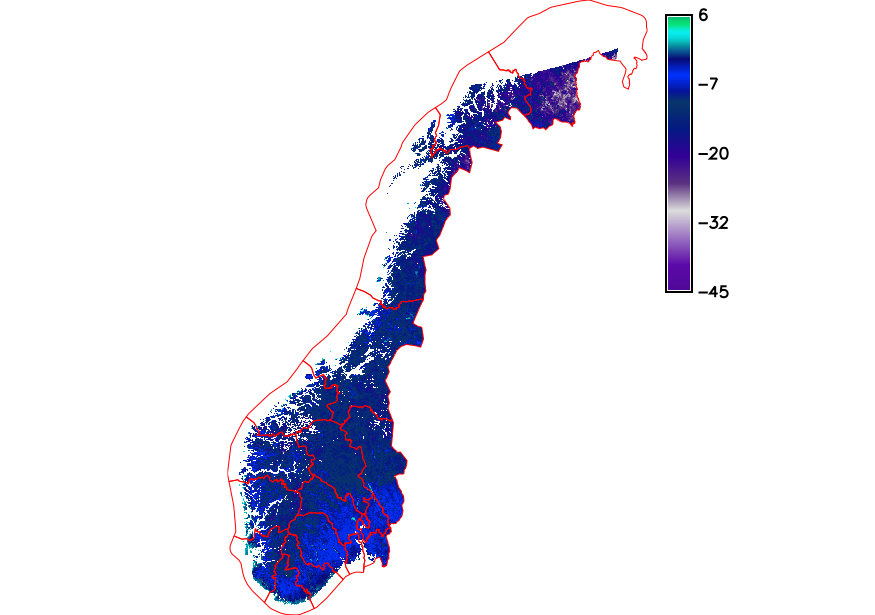Unit 20 - MODIS LST¶
There are two satellites, Aqua and Terra which carry the MODIS sensor as payload. The Moderate Resolution Imaging Spectroradiometer (MODIS) is a 36-channel from visible to thermal-infrared sensor that was launched as part of the Terra satellite payload in December 1999 and Aqua satellite (May 2002). The Terra satellite passes twice a day (at about 10:30am, and 22:30pm local time), also the Aqua satellite passes twice a day (at about 01:30am, and 13:30pm local time). (source: GRASS Wiki)
Our area of interest, Norway, is covered by two tiles (see MODLAND grid):
- h18v02
- h18v03
Download and import¶
Create a new GRASS mapset (see how-to) called modis in location oslo-region from Unit 02 - First steps and install i.modis addons extension (more about installing addons in Unit 18) for downloading and importing MODIS data (note that you have to install also pyMODIS Python Library).
pip install pymodis
g.extension extension=i.modis
Note
i.modis including dependecies is already installed on tailored virtual machine.
GRASS MODIS addon consists of two modules:
Let’s download desired tiles (h18v02 and h18v03) for year 2017 by i.modis.download. We are interested about LST products (both Aqua and Terra satellites).
Note
Already downloaded MODIS can be found in sample dataset in
modis/h18v02_03 folder.
i.modis.download settings=modis.txt folder=geodata/modis/h18v02_03 \
tiles=h18v02,h18v03 product=lst_aqua_eight_1000,lst_terra_eight_1000 \
startday=2017-01-01 endday=2018-01-01
Note
Output folder (geodata/modis in this case) must exists,
otherwise the module will fail.
File settings.txt contains two lines: username and
password for accessing MODIS download service.
Please read carefully how to register and set up your account on pyModis documentation.
Data are imported by i.modis.import including reprojection into target location.
i.modis.import -mw files=geodata/modis/h18v02_03/listfileMOD11A2.006.txt \
spectral='( 1 0 0 0 1 0 0 0 0 0 0 0 )' outfile=geodata/modis/tlist-mod.txt
i.modis.import -mw files=geodata/modis/h18v02_03/listfileMYD11A2.006.txt \
spectral='( 1 0 0 0 1 0 0 0 0 0 0 0 )' outfile=geodata/modis/tlist-myd.txt
If -m flag is given mosaics from input tiles is created
automatically, see Fig. 114.
Note
The command was run twice, once for Aqua data than for Terra data.

Fig. 114 Mosaics created from h18v02 and h18v03 tiles.
LST¶
In this section Land Surface Temperature (LST) analysis will be perfmored for Norway.
Mask based on Norway administrate border is set by r.mask based on data imported in Unit 03. Don’t forget that a mask is created in the current computation region. Computation extent needs to be set based on Fylke vector map and computational grid aligned input data by g.region.
g.region vector=Fylke align=MOD11A2.A2017001_mosaic_LST_Day_1km
r.mask vector=Fylke
Let’s check range values of our LST data (by r.info module or from Layer Manager).

Fig. 115 Raster map metadata.
r.info -r map=MOD11A2.A2017001_mosaic_LST_Day_1km
min=0
max=14015
The values do not appear to be temperature. In order to determine LST from input data, digital values (DN) must be converted into Celsius or Kelvin scale.
C = DN * 0.02 - 273.15
Conversion to Celsium scale can be done by r.mapcalc (see Unit 05 - Simple computation for basic information about map algebra in GRASS). It’s also suitable to replace zero values with no-data value (NULL values in GRASS terminology).
Example (replace tile with real map name):
r.mapcalc expression="MOD11A2.A2017001_mosaic_LST_Day_1km_celsius = \
if(MOD11A2.A2017001_mosaic_LST_Day_1km != 0, MOD11A2.A2017001_mosaic_LST_Day_1km * 0.02 - 273.15, null())"
Let’s check range values of new LST data
r.info -r map=MOD11A2.A2017001_mosaic_LST_Day_1km_celsius
min=-45.09
max=6.05000000000001

Fig. 116 LST reconstruction for Norway in Celsius scale (color table
celsius applied).